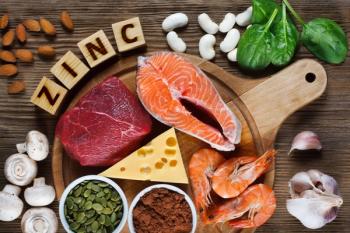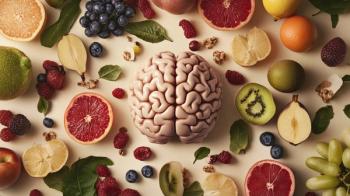
Migraine Relief: Clinical Researchers in 3 Specialties Outline Alternative Therapies
Long before the term "neurology" was coined and the brain was wholly mapped and labeled in illustrations by Thomas Willis (English anatomist and physician) in the mid-1600s, healers were trying to understand the cause of headaches and bring relief to sufferers. Willow bark, the "natural aspirin," has been in continual use for headache relief for more than 2000 years by Native Americans and Europeans. Once a contemporary of such therapies as the application of an electric catfish to an aching head (Egypt), and cutting a hole in the skull and inserting a clove of garlic for 15 hours (Arabia), it has withstood the test of time.
Long before the term "neurology" was coined and the brain was wholly mapped and labeled in illustrations by Thomas Willis (English anatomist and physician) in the mid-1600s, healers were trying to understand the cause of headaches and bring relief to sufferers. Willow bark, the "natural aspirin," has been in continual use for headache relief for more than 2000 years by Native Americans and Europeans. Once a contemporary of such therapies as the application of an electric catfish to an aching head (Egypt), and cutting a hole in the skull and inserting a clove of garlic for 15 hours (Arabia), it has withstood the test of time.This article looks at 4 new alternative therapies for migraine that are being explored by neurologists, psychologists, and a dentist. Some require that physi-cians have an open mind to consider the possibilities.Ultimately, scientific corroboration will determine whether these therapies advance into mainstream use in the years to come.Citing widespread use of complementary and alternative medicine (CAM) among the US public, the Institute of Medicine of the National Academies issued a report in January stating that general research principles should be followed in evaluating both conventional medical treatments and CAM treatments. Written to assist the National Institutes of Health in developing research methods and in setting priorities for evaluating products and approaches within CAM, the report states that more than one third of adults reported that they have pursued some form of CAM, including herbal remedies, acupuncture, and naturopathy.Headache, one of the most common patient complaints in neurologists' offices and the most common pain complaint seen in family practice, accounts for 10 million office visits a year, according to a statistical analysis included in the "Practice parameter: evidence-based guidelines for migraine headache," developed by the US Headache Consortium.1,2"There has been a steady increase in interest in complementary and alternative treatments for the past decade or more," said Alexander Mauskop, MD, a neurologist at the New York Headache Center. Mauskop outlined many current nonpharmacologic strategies for preventing and treating migraine in "Complementary and Alternative Treatments," which he coauthored and published in Neurology in 2003.3 The article divided alternative treatments into behavioral (relaxation therapy, biofeedback therapy, and cognitive-behavioral therapy), physical (acupuncture, chiropractic), and nutritional (herbal remedies, mineral supplements).Butterbur: Indications For MigraineIn a 2001 review article, Mauskop wrote, "Alternative or complementary modes of treatment often lack scientific proof of efficacy. This is true for many drugs that are used for prophylaxis of headaches as well. Many of these complementary modes are inexpensive, harmless, and possibly effective. Patients can be given a list of options in the following order of clinician preference: aerobic exercise; isometric neck exercise; biofeedback; a combination product containing magnesium, riboflavin, and feverfew; and acupuncture. The patient must decide which of these approaches is appealing, affordable, and realistically doable."4A recent study by the Albert Einstein College of Medicine in New York found an extract from the root of the herb Petasites hybridus (butterbur) to be effective in reducing the frequency of migraines by nearly one half.5 "The 75-mg butterbur dose reduced headache frequency by 48%-a substantial treatment effect," said Richard B. Lipton, MD, vice chair and professor of neurology at Albert Einstein, and lead study author.The double-blind, randomized, 3-arm, parallel-group, placebo-controlled study recently published in Neurology compared the effects of Petasites extract on 245 migraine patients at 9 sites in the United States and Germany. All participants had routinely suffered between 2 and 6 migraine attacks a month. The 75-mg dose reduced headache frequency by 50% or more in more than two thirds of the migraine sufferers, while the 50-mg dose did not result in a statistically significant reduction in headache frequency, said Lipton. In comparison, a 26% reduction in headache frequency was seen among placebo users.Also known as wild rhubarb and the umbrella plant, butterbur "has been used as a traditional migraine preventive for as long as 500 years," said Lipton. Although researchers aren't certain how it works, it's believed that butterbur reduces inflammation that contributes to enlarged blood vessels. Adverse effects, although uncommon, were mainly gastrointestinal, affecting about 10% of the study participants.Mauskop said that a smaller study, published in 2001, also looked at the potential of butterbur in preventing migraine.6Old Drug, New Method?Can common pharmacologic agents be more effective with a new release method? For patients who find pharmacologic agents effective and easy to tolerate, a new German study suggests that as a stand-alone treatment, 1000 mg of acetylsalicylic acid (ASA) in effervescent form is as effective for acute migraine attacks as 50 mg of sumatriptan or 400 mg of ibuprofen. Effervescent ASA also delivers improvement within a shorter period, 30 minutes to 1 hour, compared with the typical 2-hour improvement threshold.7Hans-Christoph Diener, MD, University of Essen, Germany, led the European Migraine Study on Aspirin, Sumatriptan and Ibuprofen (EMSASI), a double-blind, placebo-controlled, randomized, 3-fold cross-over trial funded by Bayer AG Germany. The EMSASI study involved 312 patients and 16 migraine treatment centers in Europe.The therapeutic gains from 1000-mg effervescent ASA, 50-mg sumatriptan, and 400-mg ibuprofen were nearly identical. This is good news for patients who may better tolerate one agent over the others, according to the study, published in the International Headache Association's journal, Cephalalgia, in November 2004. Diener said that this study repeated findings of previous studies in which headache improvement rates of 53% and 55% were not compromised by reducing treatment with sumatriptan from 100 mg to 50 mg.Mark Green, MD, clinical professor of neurology at Columbia University, and director of the Columbia University Headache Center, agreed that effervescent ASA "might speed up absorption," but he cautioned that bioequivalency may not have been achieved in the EMSASI study. Comparative studies need to incorporate the 50-mg optimal dose of sumatriptan, rather than the standard 100-mg dose, and the latest formula of sumatriptan-whether effervescent or encapsulated-will need to be consistent across studies, said Green.A Dentist's PerspectiveClinical researchers in other specialties continue to explore and apply alternative treatments for those patients who can't tolerate triptans and dihydroergotamine, don't respond to drug therapy, are pregnant, or simply prefer alternative treatments over pharmacologic agents. One dentist asserts that a correlation exists between migraine and inflammation in the upper mouth, and he has developed a specific treatment.8 Mark H. Friedman, DDS, director of the Westchester Head and Neck Pain Center, Scarsdale, NY, and associate professor of medicine and anatomy at New York Medical College, treats patients for headache, temporomandibular joint syndrome, and facial pain.While the precise cause of migraine headaches remains unknown, researchers are in general agreement that a key element is change in blood flow in the brain. Contrary to that conventional thinking, Friedman believes that migraine and tension-type headaches (TTHs) are caused by localized maxillary gingival inflammation. Friedman examined 1220 patients (men and women between the ages of 18 and 70) who visited his clinic over an 8-year period. About 13 years ago, he discovered that intraoral tenderness and increased local temperature were consistently present during unilateral migraine and TTH. He attributes the tenderness and warmth to "excessive local blood flow-causing edema, which presses on sensitive nerve endings."To reduce the edema and eliminate the headache, Friedman developed the intraoral vasoconstriction (IVC) device to chill the inflamed area.9 The IVC device comprises 2 small, hollow metal tubes modeled to fit over the tender area. The metal tubes are connected by rubber tubing to an ice water source. Driven by a small pump, the ice water is flowed through the rubber tubes to alternately chill each metal tube before circling back to be rechilled and repumped. Friedman says that his chilling treatment, which lasts 40 minutes, is effective in eliminating headache pain in more than 90% of patients with TTH.Friedman included in his study 40 patients experiencing unilateral episodic migraine or TTH, who were chosen from among clinic patients. The patients were treated with sumatriptan, intraoral chilling, tongue chilling, or placebo, and the level of relief was measured through local temperature readings and ipsilateral intraoral tenderness at 1, 2, 4, and 24 hours following treatment. While both intraoral chilling and sumatriptan provided significant mean headache relief on a 0-to-10 pain scale, the placebo resulted in an insignificant level of relief. The intraoral chilling procedure was more effective for headache relief than sumatriptan at all 4 post-treatment time intervals, according to the study. Using the 0-to-10 scale, results at pretreatment, post-treatment, and 2, 4, and 24 hours later were: sumatriptan, 7.3, 4.6, 3.54, 2.75, and 2.92; intraoral chilling, 7.33, 3.5, 2.33, 2.04, and 1.1; and tongue chilling, 7.2, 6.0, 5.6, 5.8, and 4.36.Patients generally return for 3 or 4 follow-up treatments and, at their second appointment, are given a topical anti-inflammatory gel that adheres to the gum tissue for preventive home use. After a month of use, the nonsteroidal gel is 81% effective in decreasing migraine, tension, and post-traumatic headache frequency and severity, according to Friedman's study. "There are almost no side effects" with the gel, Friedman said. He added, "Intraoral tenderness, closely related to migraine and TTH, increases during a headache, and is absent in pain-free individuals. This headache marker is usually present, but less severe, in chronic daily headache." The FDA approved the IVC technique in May 2004.Friedman acknowledged that he had come under fire from the professional community. Some, including Mauskop, believe the study lacked scientific basis or evidence. Steven B. Graff-Radford, DDS, co-director of the Head and Neck Pain Management Section of the Pain Center at Cedars-Sinai in Los Angeles, said he questioned the findings based on the methodology of the studies and the way patients were identified. "I have not seen any studies that would corroborate these findings and feel this study should have been better scrutinized before publishing it," he said.Psychologists'-and Others'-ToolsPatients in Canada and South America have found migraine relief through One Eye Integration (OEI) therapy, according to researchers at Trinity Western University in Langley, British Columbia. OEI is a refinement of Eye Movement Desensitization and Reprocessing (EMDR), often used by psychologists in treating post-traumatic stress disorder (PTSD).OEI therapy controls the amount of light entering parts of the brain through the eyes by alternately covering each eye in a "switching" method. In a recent OEI study by Trinity Western involving 16 patients, 13 experienced reduced migraine and TTH, according to study leader Kevin Lefebvre, a mental health counselor with the Ministry of Children and Family Development in Prince Rupert, British Columbia. Lefebvre said that the treatment was an effective alternative for many who shied away from pharmacologic agents. "Often headaches were relieved within 1 to 2 minutes." A former migraine sufferer, Lefebvre said eye pain became a signal that a migraine was coming. Using OEI, he could interrupt the migraine early through the switching method of alternately covering each eye.Like EMDR, OEI therapy is built on the understanding that each eye stimulates different parts of the brain and elicits different reactions. OEI may help patients with PTSD feel calm rather than anxious. For headache sufferers, OEI may induce the absence of pain in place of the throbbing of a migraine.10"Clinicians have been using OEI to treat headaches since its inception in 1995," said Rick Bradshaw, PhD, RPsych, associate professor of counseling psychology at Trinity Western. "As a psychologist, I use OEI for treating all types of headaches, although primarily those that emerge during the processing of trauma or abuse issues in therapy.""There are 3 main components to OEI, but only the first technique, 'switching,' is applied within my research," Lefebvre told Applied Neurology. "In OEI therapy, the patient initially focuses his or her vision on a spot in the room, while thinking about the distressing quality of the trauma, or in my research, on the headache pain." The patient covers one eye with a slightly cupped hand so that the eye can remain open, but no light enters the retina. He or she then rates the level of discomfort caused by headache on an 11-point scale. After rating the pain, the patient covers the other eye with the alternate hand and again provides a pain rating.Lefebvre's research has found that the optimal period of the exercise is about 2 minutes. Within these 2 minutes, each eye is covered for a quick interval of a few seconds. While Lefebvre conceded that the effect among non-migraine headache sufferers was not particularly dramatic, he added that "migraine sufferers did experience relief using this method, and were emphatic that the intervention had a direct and robust effect on curtailing their pain."While there is growing interest in alternative therapies, such as OEI, for migraine, Lefebvre's not claiming it is the answer for everyone. One of Lefebvre's patients, a young adult woman, was unwavering in her will to find an alternative therapy for her chronic migraines. None of the 18 alternative therapies she tried, including acupuncture, biofeedback, and OEI, worked. She eventually accepted pharmacologic therapy and found relief through a triptan.In some cases, patients take matters into their own hands. Hywel Edwards of South Wales, UK, was one of Britain's 6 million migraine sufferers. A bricklayer who had suffered from migraines since childhood, Edwards designed a cap made of flexible lycra that fits over the head and covers the eyes. He then moved into entrepreneurship. Resembling a balaclava, the Migra-Cap is cooled with packets of gel. After refrigeration, the gel remains cold for about 30 to 45 minutes."Many chronic migraine sufferers feel dependent on medication and appreciate the availability of a non-drug alternative," said Stephen Newbury, BSc, MRPharmS, a pharmacist in Swansea, Wales, UK. Thirty-two members of the patient advocacy group Migraine Action Association of the United Kingdom, most of whom used the cap in conjunction with medication, gave the cap good marks as a complementary therapy in a nonclinical trial.11 The benefit, according to the study, was that Migra-Cap effectively masked pain until medication kicked in.KATHY STONE is a freelance science and health writer based in St Paul.References1. Collins JG. Prevalence of selected chronic conditions, United States, 1979-1981. Vital Health Stat. 1986;10:1-66.2. Silberstein SD. Practice parameter: evidence-based guidelines for migraine headache (an evidence-based review): report of the Quality Standards Subcommittee of the American Academy of Neurology. Neurology. 2000;55:754-762.3. Holroyd KA, Mauskop A. Complementary and alternative treatments. Neurology. 2003;60(suppl 2):S58-S62.4. Mauskop A. Alternative therapies in headache. Is there a role? Med Clin North Am. 2001;85:1077-1084.5. Lipton RB, Gobel H, Einhaupt KM, et al. Petasites hybridus root (butterbur) is an effective preventive treatment for migraine. Neurology. 2004;63:2240-2244.6. Ferrari MD, Roon KI, Lipton RB, Goadsby PJ. Oral triptans (serotonin, 5-HT1B/1D agonists) in acute migraine treatment: a meta-analysis of 53 trials. Lancet. 2001;358:1668-1675.7. Diener HC, Bussone G, de Liano H, et al; EMSASI Study Group. Placebo-controlled comparison of effervescent acetylsalicylic acid, sumatriptan and ibuprofen in the treatment of migraine attacks. Cephalalgia. 2004;24:947-954.8. Friedman MH. Local inflammation as a mediator of migraine and tension-type headache. Headache. 2004;44:767-771.9. Friedman MH, Peterson SJ, Behar CF, Zaidi Z. Intraoral chilling versus oral sumatriptan for acute migraine. Heart Dis. 2001;3:357-361.10. Cook A, Bradshaw R. Toward Integration: One Eye at a Time. 2nd ed. Vancouver, BC: SightPsych Seminars Inc; 2002.11. Migraine Action Association UK Trial (157 KB). Available at: http://www.sesamed.com.au/documents/Migra-Cap%20UK%20Trial%20Summary.pdf. Accessed January 25, 2005.
Newsletter
Receive trusted psychiatric news, expert analysis, and clinical insights — subscribe today to support your practice and your patients.

















